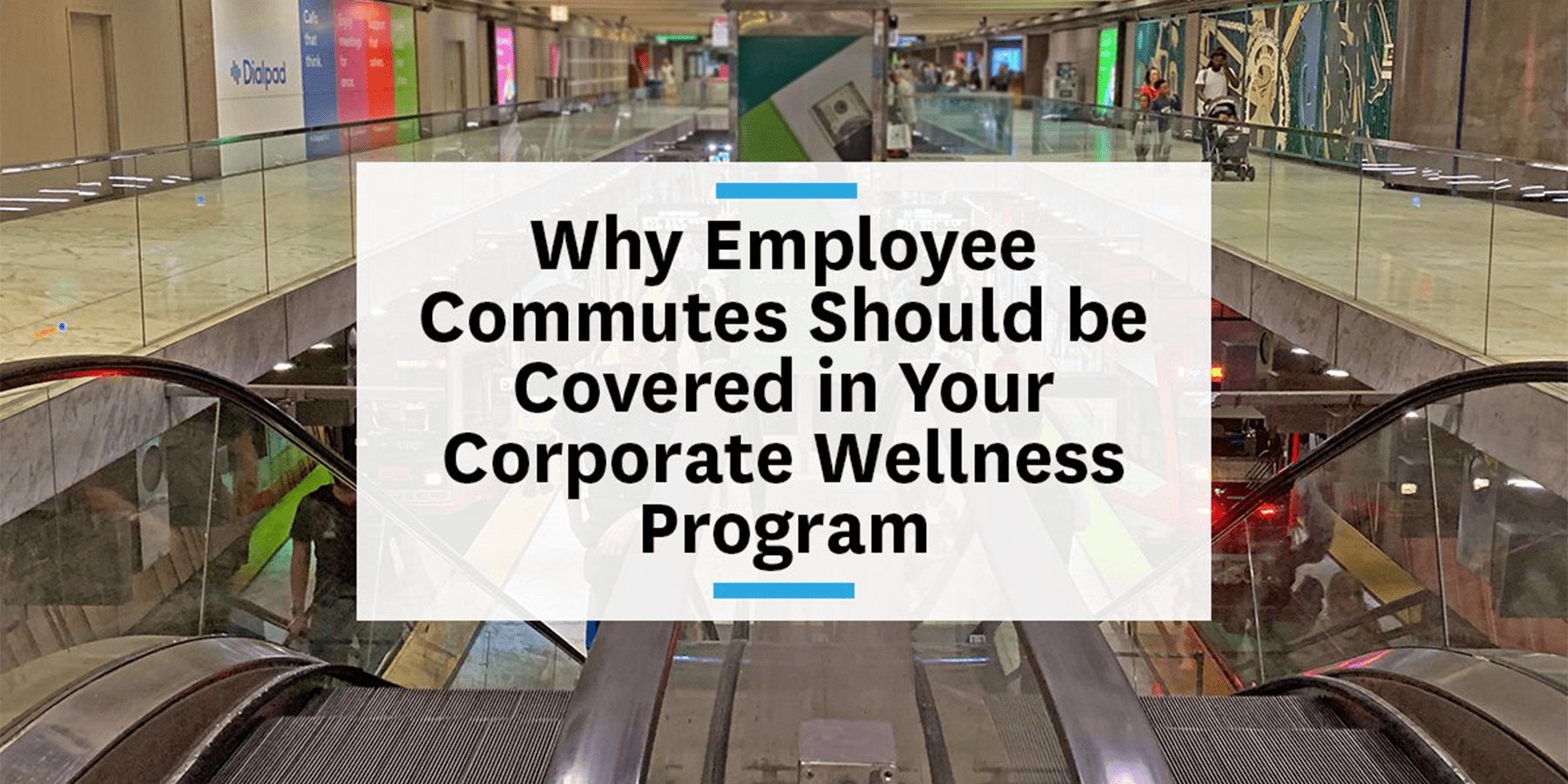When Johnson and Johnson implemented their Live for Life wellness program in 1979, it was viewed as groundbreaking. Now, corporate wellness programs are essentially required to attract and retain top talent. Subsidized gym memberships and an abundance of healthy snacks in the office are available because of the rise of these programs.

One major facet of employee wellness that often goes overlooked is the improvement of employee commutes. The stress of commuting is a major cause of both employee burnout and turnover. Not only does sitting in hours of traffic take a toll on one’s physical health, but it has a significant impact on mental health as well.
Corporate employee wellness programs
A corporate wellness program is defined as a group of benefits offered for employees to take advantage of to sustain good physical and mental health at work. Common benefits include subsidized gym memberships, on-site yoga classes, and healthy snacks available free of charge for employees.
When working to implement an employee wellness program, it’s important to understand why you’re doing it and which offerings will make the biggest impact. While the typical benefits all help to keep employees in good physical health, mental health is just as important. While there may not be a lot you as an employer can do about some factors in a person’s mental health, you can help improve a major factor: their dreadful commute.
Don’t forget about the commute
The average commute in the United States is about 35 minutes each way. That’s not including super commutes, which are 90 or more minutes each way. If your employees are staring at red tail lights for an average of 19 days per year, just think about what that will do to their productivity.
Fortunately, including commuting solutions as part of your employee wellness program can decrease the time employees spend in their car daily.
Encourage outdoor commuting
Outdoor commutes, like walking or biking, have been proven to lower stress and depression during one of the most stressful and depressing parts of an employee’s day. Encouraging employees to trade their cars for alternative methods of commuting goes beyond just verbal or written communication. The real difference is made when you make an active effort to enable people to make a change.
Installing showers in your office affords employees the opportunity to freshen up after biking, walking, or jogging to work. This is also a feature you can use in the recruitment process, making it known there are amenities at the office for employees who choose alternative commuting methods.
Flexible work hours
Not all employees have the same work style, so why should they have to adhere to the same schedule? Offering flexible work hours allows employees to work during times they can be the most productive. This also means they have the opportunity to commute during non-peak hours, so getting to the office can take half the time.
This can also include a comprehensive work-from-home policy. A sense of camaraderie in the office can be a boost to some employees productivity, but not all. Employees with jobs that require a great deal of focus can actually get more done at home in a quiet environment. It also avoids the stress of the commute entirely, since people will only have to go as far as their living room.
Unlimited paid time off
Unlimited PTO has all but replaced the typical 10-20 vacation day limit. With the rise of startup culture and offices that cater to understanding the worker as a human being, the modern workforce expects to be able to take as many days a year as they need. Before you think it will lead to nobody coming in to the office ever again: It’s been shown that employees actually end up taking fewer days when they’re offered unlimited vacation time.
Although employees will take fewer days, they take more meaningful days — including mental health days. Commuting, working, and then commuting again day after day takes a mental toll on a person. Knowing they can take a day off in the middle of the week to regroup and recharge means they’ll return to the office ready to get to work at full capacity.
Get employees on board
The tone of an employee’s time at a company is set before they even show up for their first day. Your company’s onboarding process is where you communicate all the most important information an employee needs to know. A well-timed welcome email is the best opportunity to cover employee wellness and commuting assistance, including bike-friendly features or discounted memberships to bikeshare or carshare companies.
Well, well, wellness
Even though corporate wellness programs are a newer trend in the workplace, that doesn’t mean they’re fads. Employee stress is never going to be eliminated completely, but assisting with one of the most stressful aspects of an employee’s day will go a long way. Don’t get rid of the snacks and gym memberships, just make sure to add policies that cover more than just physical health. Your employees will thank you.




